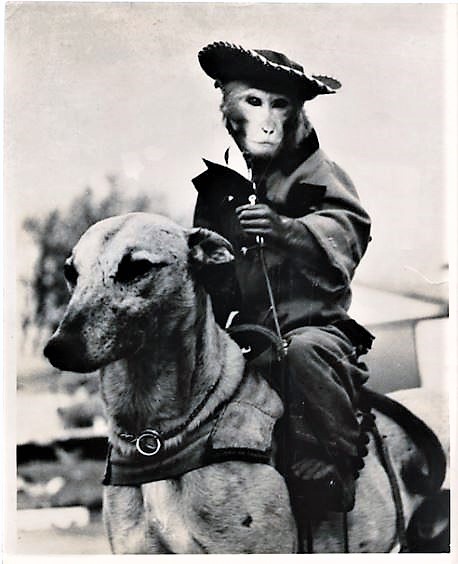
In the late 1800s and early 1900s, the Fire Department of the City of New York (FDNY) permitted firemen to keep one dog or one cat mascot (not both) or singing birds in their firehouse (apparently there was no limit on the number of singing birds allowed). These animal mascots, in addition to the horses that pulled the apparatus, provided companionship for the men, who were often required to stay at their firehouses for more than a week at a time with only a few hours off.
Engine Company No. 31 and No. 1 Tower Company, which shared headquarters in the famous castle-like firehouse at 87 Lafayette Street, broke these rules by having not only one feline and one canine mascot, but also a mascot from the primate family.
Her name was Mrs. Herman, and she was reportedly the only monkey firefighter at this time (or perhaps at any time) in the United States.
Mrs. Herman was a native of Java, an island of Indonesia primarily comprising a tropical rain forest. I don’t know how or why she came to the United States, but I do know that she joined the fire department in 1904.
Mrs. Herman knew every firefighter by name, and she enjoyed wearing the regulation fire-fighting attire of her male counterparts (she did not like to wear dresses). She also liked to spend time with Pluto, the big gray horse of the No. 1 Tower Company, and with Pinky, the four-year-old spotted coach dog mascot owned by Lieutenant Sullivan of the tower company. Two of her favorite things to do were ride around the block on Pinky’s back and take naps on Pluto’s back.
Mrs. Herman didn’t get along very well with Boxer, the firehouse mascot cat. In fact, she made his life pretty miserable. Poor thing.
In February 1905, the men loaned their monkey mascot to the Educational Alliance at 197 East Broadway. There, she entertained the children during evening programs for five months.
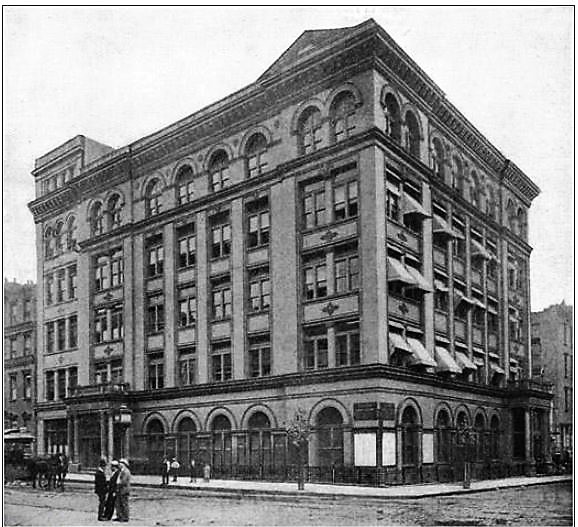
When Mrs. Herman returned to the firehouse, the men held a party in her honor. She entertained the guests by doing one of her many tricks – sliding down a ladder from the sleeping quarters to the engine room.
Poor Boxer the cat was not invited to the party. He was relegated to a neighboring fence, from which he viewed the merry reception and sulked.
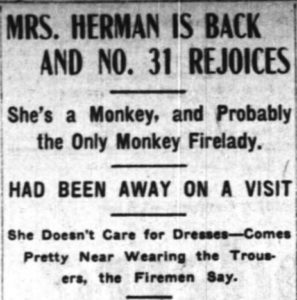
Over the years, Engine Company No. 31 had numerous animal mascots, including a famous cat named Smoke, whom I write about in my upcoming book, The Cat Men of Gotham. The company was disbanded on November 25, 1972.
A Brief History of Engine Company No. 31
Metropolitan Engine Company No. 31 was organized on October 20, 1865, at 116 Leonard Street. This firehouse had previously been home to Fulton Engine Company No. 21 of the volunteer fire department.
Fulton Engine Company, one of the city’s earliest engine companies, had been organized in June 1795 at Burling Slip. (Burling Slip was an inlet for ships on the East River until 1835, when it was filled in to create John Street, between Front and South Streets.) The company moved to the Baptist Meeting House on Gold Street (between Fulton and John Streets) in 1796 and then to the Fireman’s Hall on Fulton Street.
Over the years, the company relocated numerous times until finally moving into its new house at 116 Leonard Street in 1864, under the command of foreman Patrick Gavagan and assistant foreman Michael Buckley. (The city had purchased this property in 1862 for $10,000.)
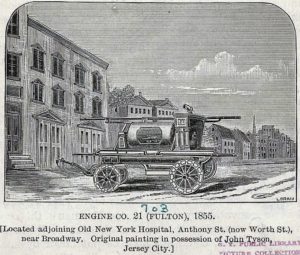
The firehouse at 116 Leonard Street was a three-story brick house that had previously served as a boarding house for families and single men. It was replaced in 1866 by what was considered a first-class building, large and airy, with all the comforts necessary.
The second floor featured a large bunk room and officers’ room, and the third floor provided space for “a variety of amusements” (it reportedly had a “boat pulling arrangement,” whatever that could be.)
A year after moving into 116 Leonard Street, Fulton Engine Company No. 21 was disbanded to make way for Engine Company No. 31 of the new paid fire department.
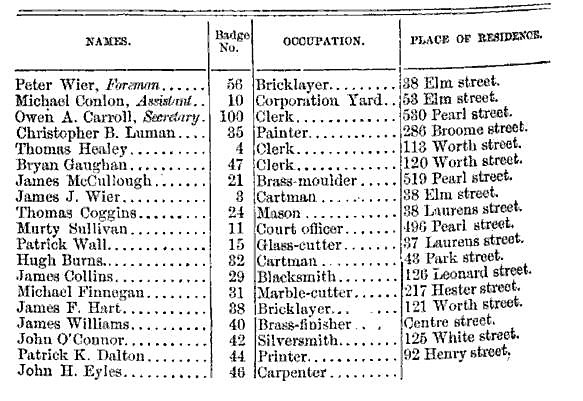
Engine Company No. 31 Moves to Elm Street
In 1893, the New York Life Insurance Company commissioned architect Stephen Decatur Hatch to extend its headquarters at 346 Broadway eastward toward Leonard Street. Shortly thereafter, Hatch passed away. The renowned architectural firm of McKim, Mead & White were commissioned to complete the project.
In exchange for the firehouse property at 116 Leonard Street, the insurance company offered the services of Stanford White as a consultant on a new firehouse for Engine Company No. 31. The city also received $83,000 for the old firehouse—a sum then adequate to build three standard single-bay firehouses.
In 1894, the men of Engine Company No. 31 were temporarily relocated to the old Grammar School No. 24 at 66-68 Elm Street (a two-story building constructed in 1843-44) while their new castle was constructed at the northeast corner of White Street and Elm Street (today’s Lafayette Street). The men and their animal mascots moved into their new home–“The finest firehouse in the world”–in 1896.
In 1905, the famous fairy-tale firehouse on Elm Street got a new address: 87 Lafayette Street.

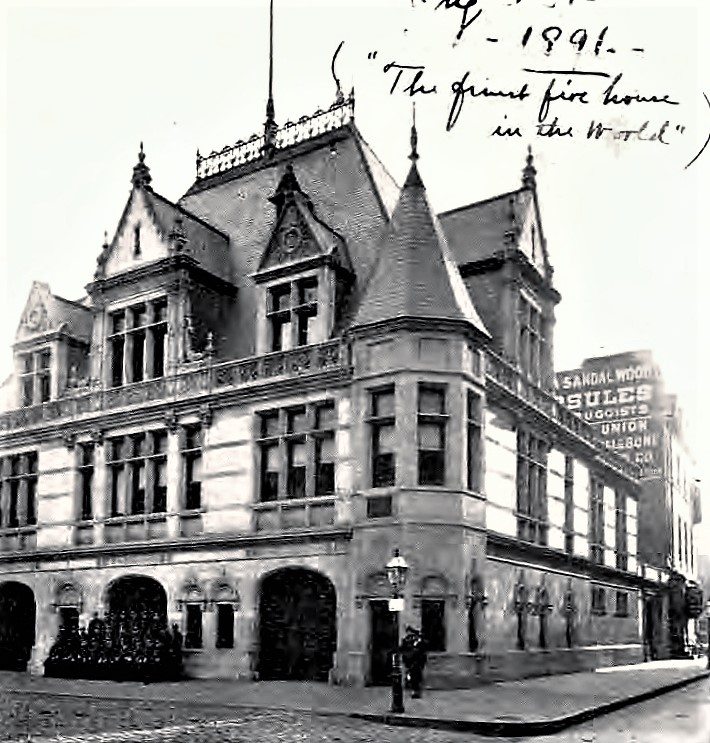
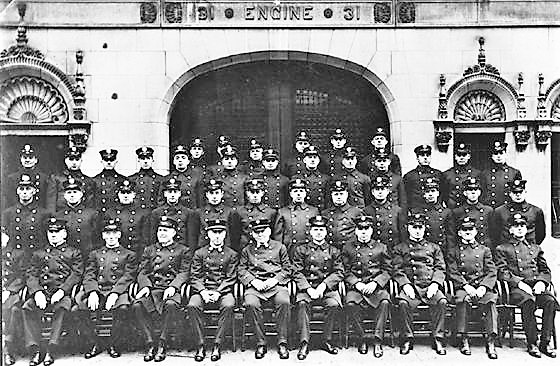
In 1965, the city took the firehouse out of service and sold the building, which by this time was due for an extensive restoration and modernization, including fireproofing. Engine Company No. 31 was temporarily relocated with Engine Company No. 66 at 363 Broome Street, and then at 100 Duane Street until 1970, when it returned to Broome Street until the company disbanded.
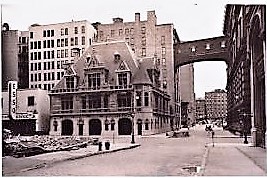
Although it was declared a city landmark in 1966 and placed on the National Registry of Historic Places in January 1972, the old firehouse on Lafayette Street sat empty and neglected for years until 1978. Today it’s occupied by Downtown Community Television Center (DCTV), which recently completed an extensive $800,000 renovation project on the building.
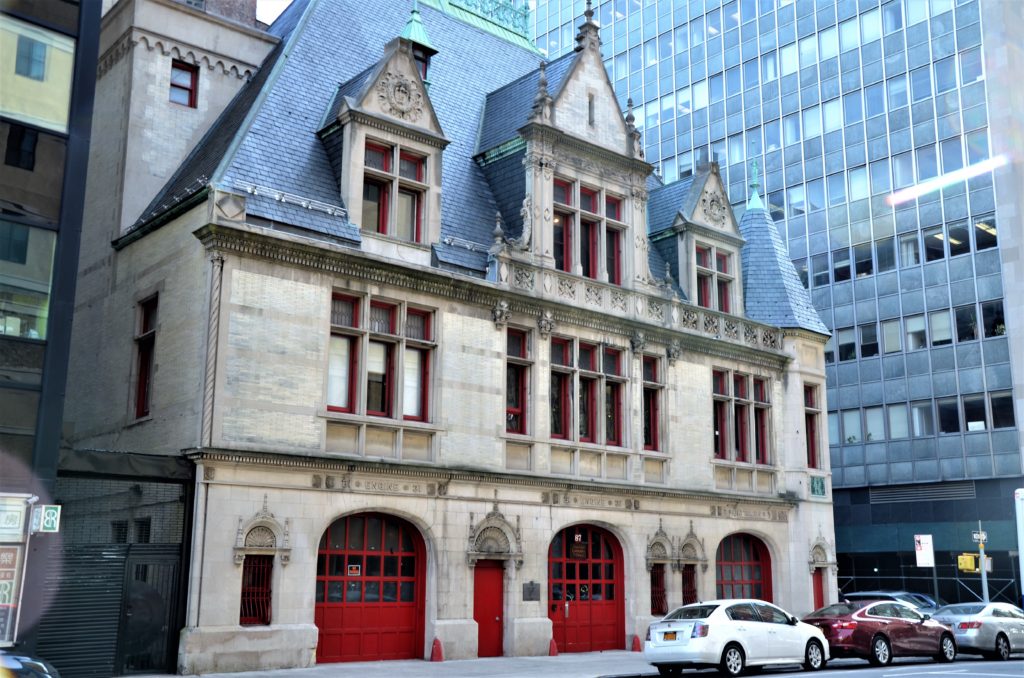



My Grandfather work at the fire house from 1914 to 1934. I have his dress hat and retirement photo. I sure would like to know more about what it was like back in the days.
Are there and photos of the fire trucks and fire fighters available?
I don’t have access to many photos, but here are two that I found:
https://nyfd.com/engine_31/engine_31.html
Also, the New York Fire Museum may have some photos — they have an extensive online archive. They would probably be able to help you out. They may also be interested in getting a copy of your grandfather’s retirement photo. My great-grandfather was a police officer in Queens during the same period, about 1904-1926 or so, and I’d also love to go back in time to see what it was like in those days!
By the way, this story is going to be featured in my upcoming book, The Bravest Animals of Gotham: Tales of FDNY Mascots of Old New York. The book will be coming out some time in 2023.